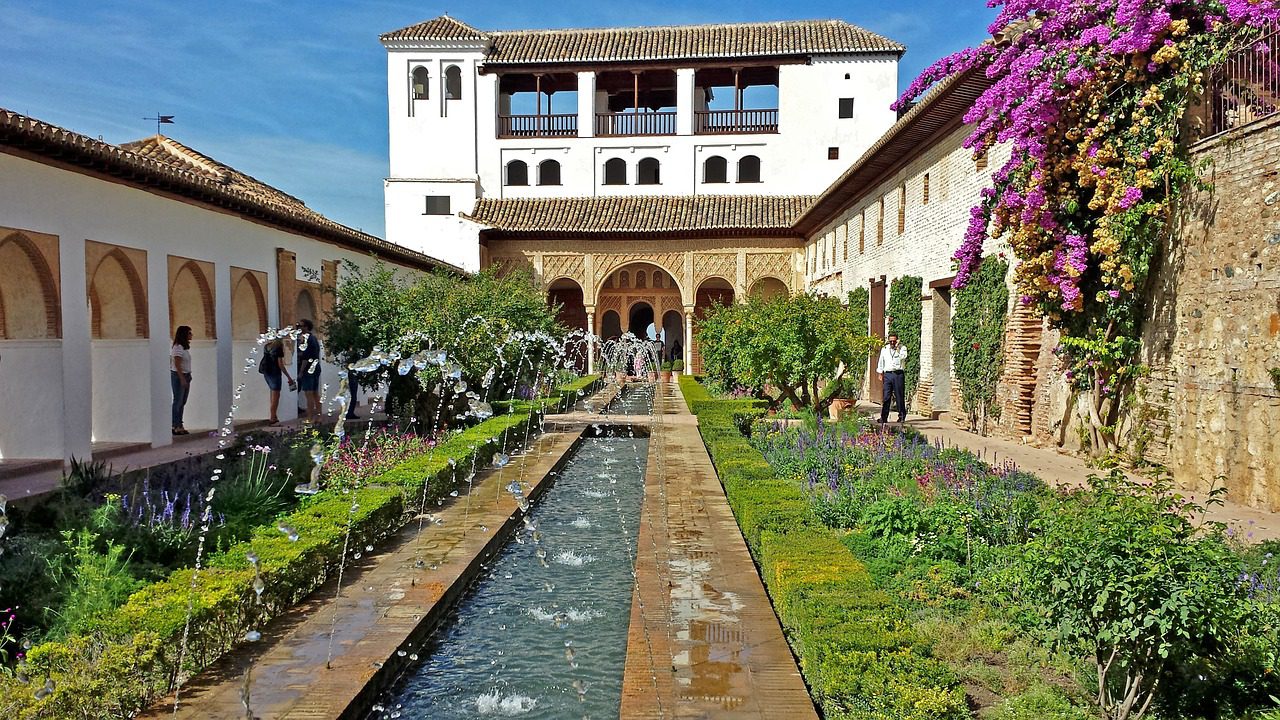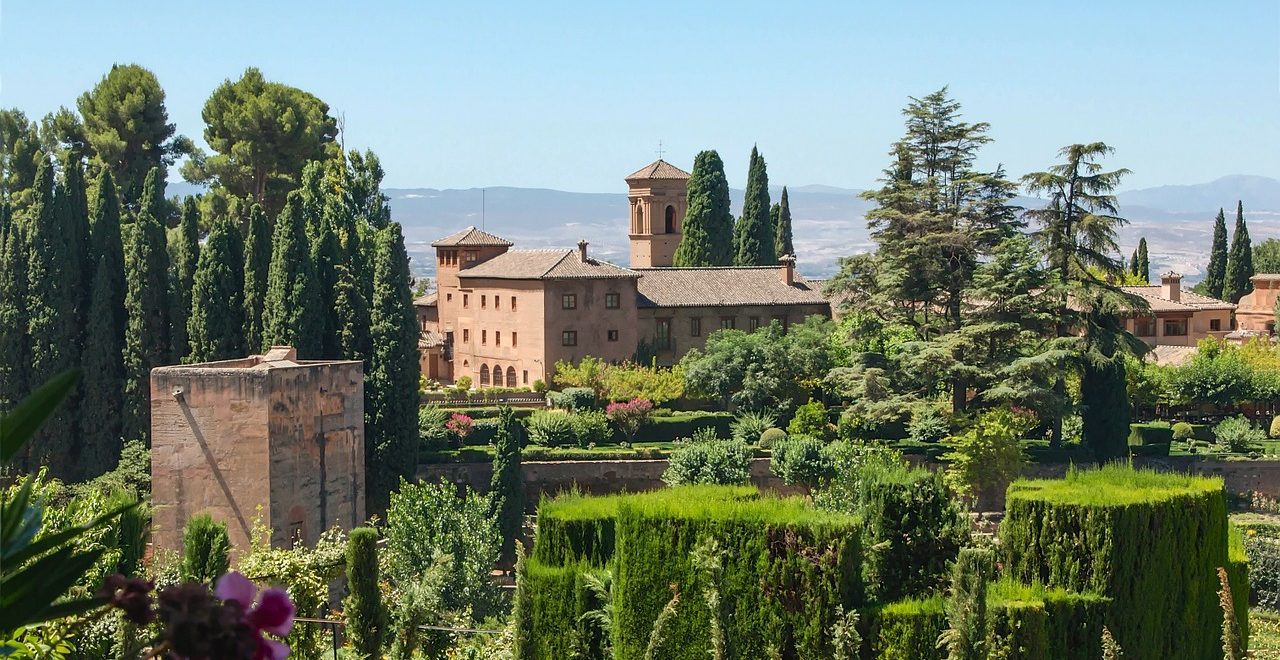Andalusia’s crown jewel is, undoubtedly, the beautiful city that is Granada. Blooming with dazzling, colourful flowers and ornate, opulent architecture, you feel like you are transported to another time. And in a way, this is absolutely true. The grand palaces and stately compounds, that the city is famous for, were originally constructed over 700 years ago. This was when the Moors occupied Spain, with Granada being the best example of that era. Adding to the atmosphere, the grand Sierra Nevada peaks provide the perfect backdrop to the city.
Alhambra
A homage to the Moorish culture that once occupied Granada, the Alhambra is the centrepiece of the city. A relic that has remained flawless throughout the ages. The structure itself is a complex of many important buildings, including a palace, a castle and a summer retreat. All of these are enclosed in a citadel of enchanting beauty. It was built in the 13th and 14th centuries for the Nasrid family, the ruling emirs of ‘the Emirate of Granada’. In sum, these are the finest works of Islamic architecture and craftsmanship in Europe. Towards the end of the 15th century, the Reconquista of the city, in the name of Christianity, led to the settling of Emperor Carlos V. At the Alhambra, he demolished a series of Arabic palaces to make way for his own Renaissance building, El Palacio de Carlos V. Although the facade is different from the surrounding buildings, inside it is equally stunning. The huge circular courtyard is surrounding by many columns, with a Romanesque feeling to its design. The palace is the location for two museums, the Museum of the Alhambra and the Museum of fine art.
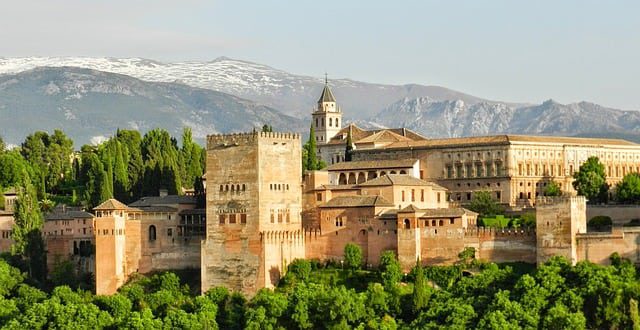
Palacios Nazaríes
In contrast to this is the Palacios Nazaries, right in the heart of the Alhambra. It was originally separated into three pieces which can still be explored today. The Mexuar is the first place you will come through to. Built in the 14th century, it was a hall for judicial matters and council with members of the state. Passing through here is the Palacio de Comares. This was the official private residence of the ruling emir.
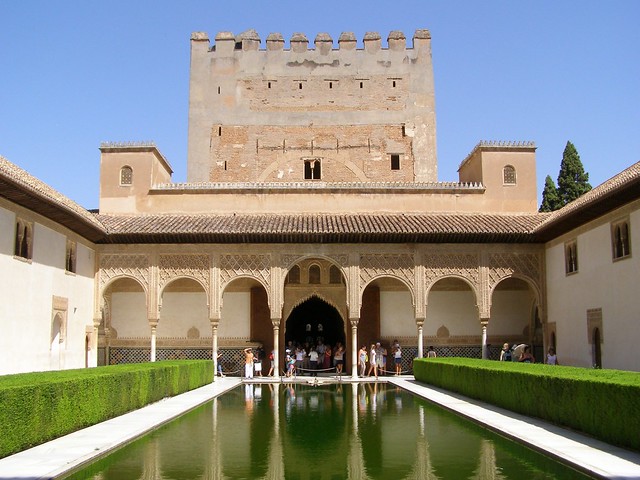
Palacio de Los Leones
Lastly is the Palacio de Los Leones, the private area for the entire royal family and the Emir’s harem. With beautiful tiles, courtyards, stucco, filigree and woodwork, the entire palace complex is a sight to behold. The Alcazaba occupies the Western corner of the Alhambra, with the remains of this martial structure still there. It was originally a 13th-century citadel, which featured the great Torre de la Vela. This was the site of the great celebration, signifying the completion of the Reconquista. Nowadays, it serves as an excellent location to get panoramic views of the city below.
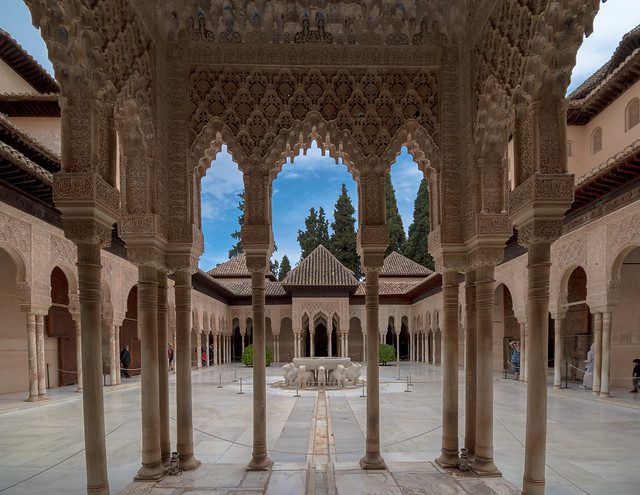
Sala de la Dos Hermanas
The Sala de Dos Hermanas is possibly the most richly decorated hall throughout the area. The translation is the Hall of Two Sisters. Adorned by a vast assortment of tiles and perfectly placed glass windows, the hall is like walking into a heavenly fantasy. And this is probably just what they wanted to depict. The interior of the roof is, however, the most spectacular sight. Shaped like a geometrical star and studded with 5000 tiny cells, it is like a man made starry sky. The garden outside is also beautiful, with a fountain centrepiece surrounded by marble.

Jardines del Partal
Through the Emperor’s Chambers of Charles I, you will eventually come to the Jardines del Partal. These are a set of terraced gardens which are a stunning sight to behold. The majestic reflection pool is an iconic demonstration of Arabic architecture in the garden. It reflects the Palacio del Partal, as well as the heavenly blue sky. The sky is guarded by the old watchtower, the Torre de las Damas of the 14th century. A perfect spot of tranquillity amongst the great buildings.
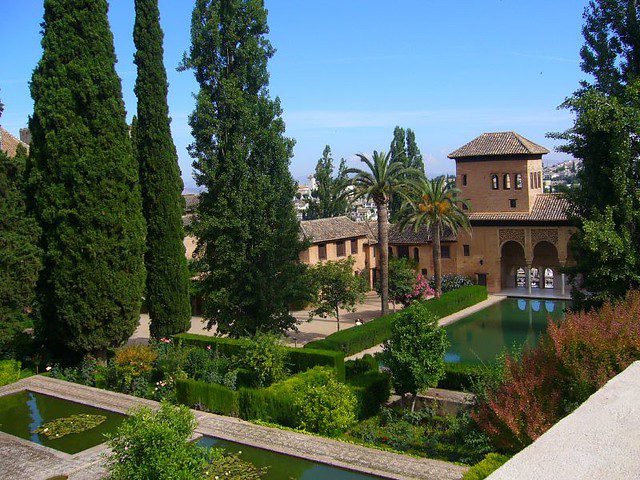
Palacio de Generalife
This exquisite white villa was the summer house for the Emir and his family. A relic of those times still stands today: a 700-year-old cypress tree. In the summer months, Granada can get especially hot. The gardens of the Palace are just the place to take the edge off the heat. Plenty of trees around provide much-needed shade, as well as the cooling effect of the many fountains and pools. In the springtime, a great variety of flowers grow on the trees, painting a palette of colour in the grounds. Aromas, ornate plants and architectural forms all combine to provide a sensual feast in the beautiful spot, at the edge of the Alhambra.
